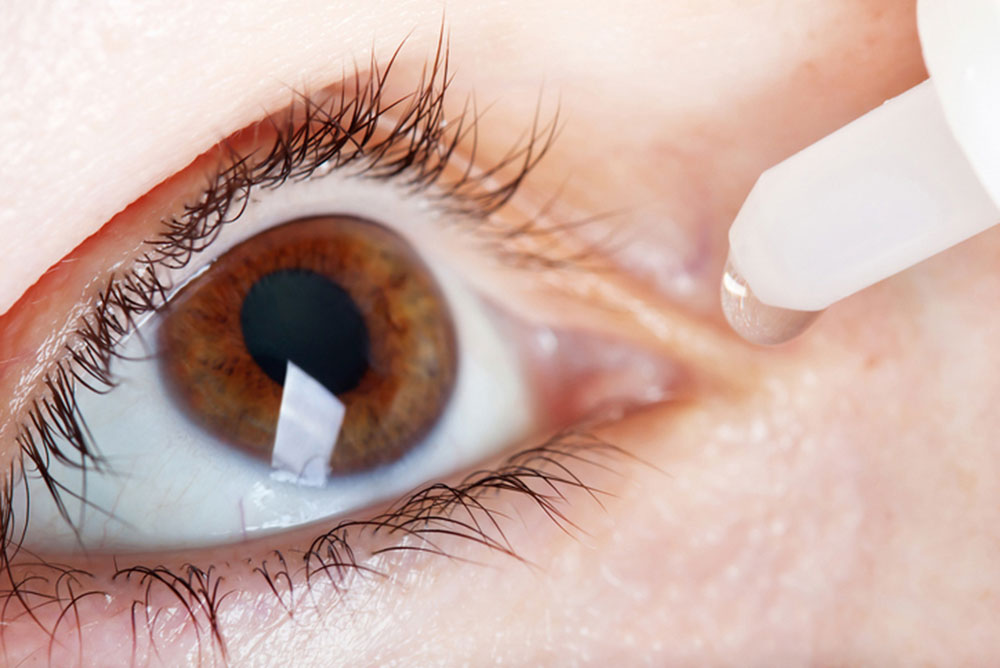
iStock
By Mary Carpenter
LittleBird’s Well-Being series responds to reader questions.
Q: I’ve had two eye doctors tell me never to use eye drops for redness (just get more sleep!). Any information on why that is or why it’s actually safe?
A: “It’s fine to treat minor irritation, exhaustion and occasional redness with eye drops,” according to Medicalnewstoday. But eye drops that work as vasoconstrictors, like Visine, can cause redness rebound if used too many days in a row. The alternative, lubricating drops, known as artificial tears, can be more helpful—though the most effective ones require a prescription.
For red eyes—also pink, yellow or orange—the best treatment is usually time. Even when appearing completely bloodshot, they are usually nothing to worry about. In the case of discoloration—the result of tiny blood vessels swelling, leaking or bursting —eyes can take as long as three weeks to absorb the blood and slowly turn white again. When linked to irritation caused by an object like an eyelash, redness should disappear within several hours, although longer-lasting discoloration due to an injury, such as a scratch, can lead to infection and require antibiotic treatment to avoid lasting damage.
Tea bags can help with a variety of eye ills—from red or dry eyes to under-eye bags and circles —due mostly to their soothing effects, similar to those of warm or cool compresses, and to chemical ingredients of certain teas. To prepare, better to use organic tea in unbleached bags without staples: Steep two tea bags, squeeze out excess liquid and leave until lukewarm or refrigerate to cool. Apply to closed eyes for 15 to 30 minutes, keeping liquid out of the eyes, and massage or apply gentle pressure to the eyes or surrounding area.
The caffeine in black and green teas may improve skin elasticity and reduce swelling and pigmentation; and polyphenols can have anti-inflammatory as well as antioxidant effects. Also helping to reduce swelling, flavonoids can relieve eye infections and blocked tear ducts—both in black and green teas, and in herbal teas like chamomile, which also has calming effects to help reduce inflammation.
Cooler bags, or any cool compress, can help shrink dilated blood vessels below the eyes that play a role in dark circles as well as in eye puffiness. And warmer bags can reduce blepharitis, inflammation of the eyelids that can be due to bacteria; and for other causes of swelling, help to loosen flakes of scalp dandruff or unclog oil glands, which can also improve quality of the tears.
(Drinking caffeinated hot tea daily also reduced risk of glaucoma by 74%, in a 2018 analysis at the UCLA School of Medicine, based on 1,678 participants in the NHANES [National Health and Nutrition Examination Survey]. In contrast, neither coffee nor iced or herbal teas had any effect.)
But many eye ills such as highly contagious conjunctivitis—also called pinkeye and characterized by extreme itchiness—require antibiotics as well as frequent hand-washing to prevent spreading. A rare cause of redness, uveitis—inflammation of the eye that can come on suddenly, often accompanied by pain and blurred vision—is a reason to seek immediate medical care. And regular ophthalmological visits can watch out for swelling linked to glaucoma.
Dry eyes alone can be a reason for seeking medical treatment. Dry Eye Syndrome (DES) has been publicized in recent years by Jennifer Anniston talking about her affliction on TV. Also called keratoconjunctivitis, DES includes decreased tear secretion, production of poor-quality tears and/or accelerated evaporation of tears, associated with swelling around and on the surface of the eyes.
Other common causes of excessive dryness include hormonal changes during menopause, air pollution, winter weather and seasonal allergies. Because allergy treatments like antihistamines and decongestants can make dry eyes worse, some allergy sufferers rely on Alaway antihistamine eyedrops in the morning; and Systane Ultra lubricating drops for symptoms of DES at other times of day.
Dry eyes can, alternatively, be a symptom of the immune disorder Sjogren’s syndrome, which affects moisture-producing glands throughout the body and occurs most often in women over 40. They may also be a symptom of other immune-related conditions like rheumatoid arthritis, while deficiencies in vitamin A and thyroid hormone can be other reasons for eye dryness.
Finally, overuse of so-called “redness relief” eyedrops, which prolongs or even increases redness, can be another reason for seeking medical intervention. Writes New Jersey ophthalmologist Sydney Tyson, “Over time [redness relief drops] really prevent your eyes from naturally recovering.”
Redness-relief drops work by constricting superficial blood vessels on the eye surface that may have dilated to help the eyes respond to irritation. When the drops’ effects wear off, vessels can dilate to an even larger degree, which increases redness and is why experts advise using these drops one to two days maximum.
Lubricating drops, on the other hand, increase blood flow to the surface of the eyes and “will actually help repair the damage done by exposure to adverse conditions,” says Tyson. (Concern about preservatives in lubricating drops have led many to choose preservative-free “PF” versions of popular brands, such as Refresh.) Tyson includes redness-relief drops in her category of adverse condition causes.
For sufferers of eye conditions related to insufficient sleep, chronobiotic drugs like melatonin can “open the doors of sleep by inhibiting the propensity to wakefulness” in the brain that can occur in late evening, according to researchers in China and Texas. In addition, melatonin works as “the chemical code of darkness [providing] information crucial to the neuroendocrine system.”
But hearing the advice to “just get more sleep” makes me bristle: Even with the help of nightly melatonin, my best efforts sometimes fail. There are other steps I could take: skipping coffee ice cream for dessert, putting away the mystery page-turner, quitting Words with Friends, closing my cumbersome blinds. First, though, I look forward to trying tea bag treatments—along with my already-soothing afternoon pot of tea.
—Mary Carpenter regularly reports on topical subjects in health and medicine.
